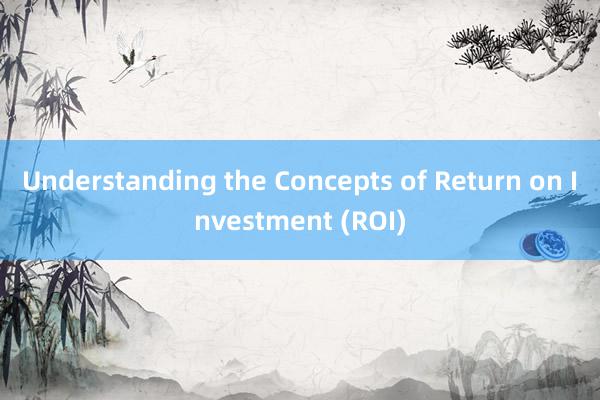时间:2024-09-08 07:18

### Understanding the Concepts of Return on Investment (ROI)
In the realm of financial management and investment analysis, the concept of Return on Investment (ROI) is a fundamental tool that helps investors evaluate the efficiency of their investments and make informed decisions. ROI provides a straightforward way to measure the profitability of an investment by comparing the gains or losses against the cost of the investment. This article delves into understanding the key concepts of ROI, its calculation, and how it aids in investment decision-making.
北京华日辉生物技术有限公司#### **What is Return on Investment (ROI)?**
ROI is a performance measure used to evaluate the efficiency of an investment or to compare the efficiency of several different investments. It is calculated as the gain or loss on an investment relative to the amount invested. The formula for calculating ROI is:
\[ \text{ROI} = \frac{\text{Net Profit}}{\text{Cost of Investment}} \times 100\% \]
This formula indicates how much return an investor has received on their investment, expressed as a percentage. A positive ROI suggests that the investment has generated profit, while a negative ROI indicates a loss.
#### **Components of ROI**
The components of ROI include both the cost of investment and the net profit from that investment. The cost of investment typically includes all expenses directly related to the purchase or acquisition of the investment, such as buying costs, fees,雅江人才网_雅江招聘网_雅江人才招聘网 and any other expenditures incurred to bring the asset under control. Net profit, 博学学生网 - 大学生|辅导学生|学生祝福 on the other hand, 安徽道城商贸有限公司 is the total revenue minus the total costs associated with the investment.
#### **Why is ROI Important?**
ROI serves several critical purposes in the world of finance:
- **Evaluation**: It allows investors to assess the profitability of their investments and compare them against alternative opportunities.
- **Decision-Making**: By quantifying the returns, investors can make more informed decisions about where to allocate their funds for maximum return.
- **Performance Measurement**: It acts as a benchmark for evaluating the performance of investments over time or against industry standards.
- **Risk Assessment**: Although ROI does not consider risk directly,广安读书网 it can be used in conjunction with other metrics like standard deviation or beta to provide a more comprehensive view of investment performance.
#### **Limitations of ROI**
While ROI is a valuable tool, it has limitations that investors should be aware of:
- **Lack of Time Value of Money**: ROI does not account for the time value of money, which means it does not differentiate between investments made at different times or with different durations.
- **Inflation Impact**: It does not adjust for inflation, potentially overestimating the real return on investments.
- **Omission of Risk**: ROI does not consider the risk involved in achieving the returns, which can vary significantly across different investments.
#### **Conclusion**
Understanding the concept of Return on Investment (ROI) is crucial for investors looking to make informed decisions about their capital allocation. By calculating and analyzing ROI, investors can gauge the profitability of their investments广安读书网, compare various options, and make strategic choices based on quantitative data. However, it's essential to recognize the limitations of ROI and consider other factors such as risk, time value of money, and inflation when making investment decisions.